Vietnam: looking to the future
Near past of blood and suffering
XIX. From the middle of the twentieth century the French began to colonize Vietnam, that is, to hunt down the goods of Vietnam in the name of civilization and Christianity and to oppress the Vietnamese people. Colonialism became a source of income, with the present French capital and obtained great benefits thanks to the coal, tin, wolframio and zinc mines, and the tea, coffee and rubber plantations, forcing the Vietnamese to harsh living and working conditions and paying salaries of misery. A simple example: In a rubber plantation of the Michelin company were working 45,000 Vietnamese, of which 12,000 died from disease and malnutrition between 1917 and 1944.
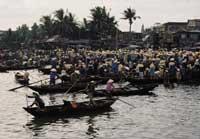
Vietnamese nationalism and anti-colonialism emerged, grew and took root in Anart, where the French stepped hard. Communism was the one that managed to channel the aspirations of the population of origin (independence and division of lands). Ho Chi Minh founded in 1925 the Revolutionary Youth League of Vietnam and in 1930 the Communist Party of Indochina. Strikes against the French government began between 1930 and 31 and in 1940 rebellions took place, but the French suffered cruelly.
During World War II in 1940, when France was under Nazi rule, the Vichy collaborationist government accepted the entry of the Japanese army into Vietnam. In 1941 Ho Chi Minh created the Vietnam Independence League, called Viet Minh, and confronted the Japanese. They dragged the rice crops and died two million Vietnamese hunger. After World War II, the French wanted to recover Vietnam. Ho Chi Minh, to prevent the Chinese from invading Vietnam, initially accepted the French government, but soon Viet Minh addressed the uprising against the French (1946-54).
Hundreds of thousands of deaths after eight years of war and after the decisive battle of Die Bien Phu, the French came out of their heads. The Geneva agreements decided to divide Vietnam into two. In North Vietnam, Ho Chi Minh established a communist regime and began the persecution of “anti-revolutionary elements”: thousands of people were executed and tens of thousands imprisoned. In South Vietnam, a Catholic and anti-communist regime was established that from the beginning was affected by corruption and nepotism. They ruled the people with their backs, stepping on the people with the help of the army.
Despite being an anti-democratic and murderous regime, they gained support from the US, whose main goal was to curb communist expansion during the “cold war.”
War of Vietnam
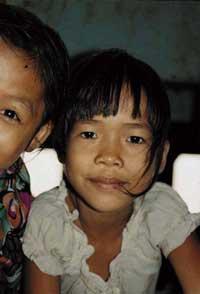
The communists of South Vietnam, Viet Cong, with the help of the government of Hanoi, initiated guerrilla warfare against the government of the South in the early 1960s. Faced with the danger of government extinction, they called for aid to the US. And these, little by little and indirectly at the beginning and in an artistic way from 1964, went into the semi-open war of Vietnam, never officially declared. The war ended in 1975.
The Americans were defeated and Vietnam joined. We have heard many times that 58,000 Americans died in that war, but less than 1,500,000 Vietnamese died and millions were injured or affected. As in the civil wars, the winners harshly punished the losers: the communist regime imprisoned hundreds of thousands of South Vietnamese people in the “re-education frameworks.”
After independence and unity, the Vietnamese did not end the war. In 1978 the Vietnamese troops invaded Cambodia and expelled the Khmer Rouge from government, established a government in favor of Hanoi. The Vietnamese faced the guerrilla war of the red khmer in Cambodia until 1989.
Finally, peace!
After World War II, many Vietnamese have not known peace. Now you are tasting the real peace that has been denied to you for so many years. In addition, international isolation with Vietnam's craft economy is disappearing at full speed, not to say it has been completely eliminated. The new 1992 constitution opens the barrier to the market economy and, as in the China of its neighbourhood, a curious process is taking place: the regime is politically closed, without questioning the leadership of the Communist Party, but at the same time access to capitalism has been facilitated.
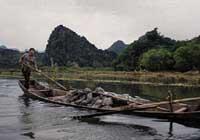
This process has taken a speed almost unstoppable after the disappearance of the Soviet Union and currently foreign investments are growing day by day. Foreign and multinational banks disembark and the signs that life is also becoming a Western world: neon lights in the cities, tangos and samba pastry shops and karaoke from Japan has become a “national sport”. The customs and values of the traditional rural society still prevailing are in contrast.
Vietnam is located in the southeast of the Pacific, the fastest growing economic zone in the world, surrounded by Japan, China, Taiwan, South Korea, Hong Kong, Singapore, Thailand, Indonesia and Malaysia. 70 million Vietnamese, workers and managers (like all in the Far East) and cheap local labor. A great opportunity for foreign capital! If the political situation does not ruin the environment, Vietnam, forgotten the war, rises like foam.
Vietnam in figures
- Surface: Surface: 331.033 km 2
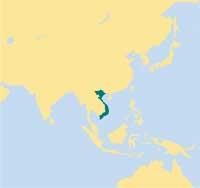
- Population (1992): 69.052.000; population density: 208,6 inhabitants/km 2
- Geographical distribution of the population: 20% urban, 80% rural
- Distribution of the population by age brackets: Less than 15 years 39%, 15-29% 28.7, 30-44% 16, 45-59% 9.1%, 60-74% 5.6% and more than 75% 1.6%
- Population forecasts: 81.094.000 in 2000; 95.700.000 in 2010
- Birth rate per 1,000 inhabitants: 29,5 (global average: 26,4)
- Mortality rate per 1,000 inhabitants: 8.1 (global average: 9.2)
- Growth rate per 1,000 inhabitants: 21,4 (global average: 17,2)
- Productivity rate per woman in the age bracket: 3,7
- Life expectancy: 67 years for women and 63 years for men
- Gross Domestic Product 1990: 15,200.000.000 dollars
- External debt 1989: 15.072.000.000 dollars
- Per capita income 1990: 230 dollars (approximately 11,650 dollars in Euskal Herria)
- Distribution of gross domestic product and active population: agriculture 51.7% and 72.7% of the population; mining and industry 22.8% and 10.9% of the population; trade 18% and 5.5% of the population; construction 4.4% and 2.6% of the population; rest 3.1% and 8.3% of the population
- Radio: one for every 9.7 inhabitants
- TV: one for every 31 inhabitants
- Number of telephones: one for 544 inhabitants
- Literacy rate for the population aged 15 or older (1989): 87.6% (93% in men and 82.8% in women).
Ecological Consequences of the Vietnam War
During the Vietnam War, the U.S. used systematic destruction and incineration of the environment, ecocide, as a military tactic, hitherto unmatched in history. With the aim of destroying the bases of Viet Cong, 72 million liters of herbicide (orange agent, blue agent and white agent) were dispersed in 16% of the surface of South Vietnam, reducing forests. It is an orange agent with dioxins that achieved the unfortunate fame of Vietnam.
Dioxin is the most toxic chemical in the world known so far, the terrible cause of cancer and genetic mutations. Today, after 20 years, dioxin is still present in the food chain, where researchers have found large amounts of dioxins in the milk samples of women living in these territories.
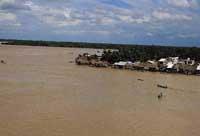
Using gigantic bulldozers, jungles, farmland and entire villages were torn down and devastated by soil deterioration. The Bravos forests were bombarded with nap-souls for burning and topping. Limestone hillsides were bombed and diffused with acid, causing rotations. The elephants were attacked by air with bombs and nap-souls, with the excuse that the guerrillas used them for transportation. The Americans destroyed 20,000 km2 of forests and farmland, an area equivalent to that of the entire Basque Country. In total, about 13 million tons of bombs were emitted, which means 265 kg per inhabitant. The bombs released 450 times more energy in Vietnam than the atomic bomb dropped in Hiroshima.
As a result of this attack, the abundant tropical forests did not grow again, fishing was drastically reduced in rivers and coasts, the death of many animals, the extinction of many species, and the productivity of farmland is kept below the pre-war level. There has also been a significant increase in the population in some types of cancer and diseases caused by herbicides.
The surface of the Earth was perforated by 25 million bombs, with craters of 30 m of diameter. Filled with rainwater and converted into agitation, mosquitoes that transmit malaria are now an ideal place to live. On the other hand, these deep craters have wasted many territories that could be used for rice paddies.
The lack of machining and crafts continue to prevail in Vietnam
Industrialization is rapidly evolving, faster since the early 1990s. However, traditional techniques and family workshops predominate in Vietnamese rural society. The photographs show the productive processes of silk syrup.
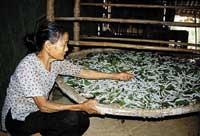
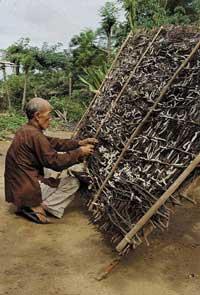
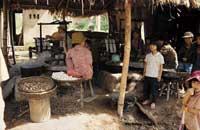
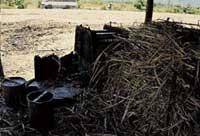
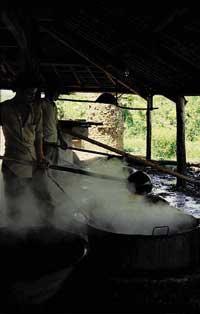
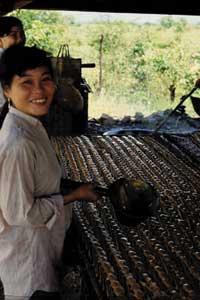
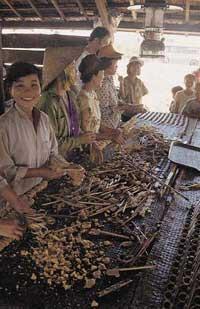
Buletina
Bidali zure helbide elektronikoa eta jaso asteroko buletina zure sarrera-ontzian











